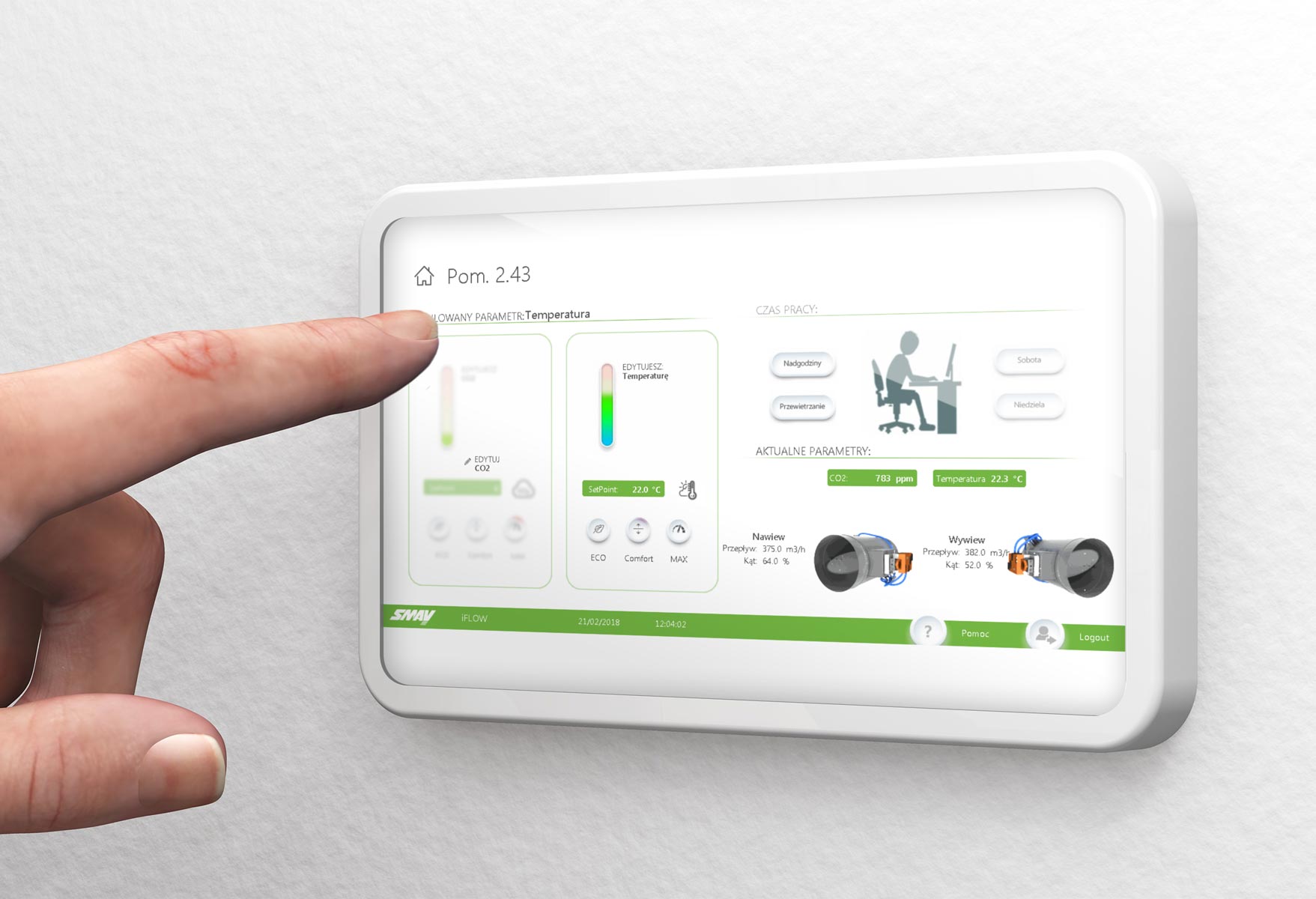iFLOW - SYSTEM FOR INDIVIDUAL VENTILATION
System for optimizing the operation of the ventilation system in the building with use of VAV regulators


Investment and user friendly, easy to design and install.
The iFlow system was created for building objects which structure and internal architecture doesn’t constitute open spaces but is arranged as a group of closed rooms in which, due to the variability of their use, it is required to adjust the amount of supplied air in accordance with the demand. Those facilities may include hospitals, offices, public utility buildings, schools, kindergartens, office buildings next to warehouses and production plants, apartments or floors in office buildings for individual arrangement.
The proper amount of fresh air supplied by the ventilation system is an important element of creating the right atmosphere in the room. The amount of air supplied, in addition to the type of the room, depends primarily on the number of people occupying in it at the same time. Buildings such as office buildings, schools, hospitals and museums are characterized by variable attendance depending on the season, day of the week or hour. The number of factors affecting changes in air flow is so great that it is impossible to clearly define the scheme according to which the amount of air blown could be adjusted. In addition, currently prevailing market trends and low energy demand of facilities require solutions that dynamically change parameters.
Such solutions include follow-up systems that adapt to the current load of the rooms, thus bringing maximum operational savings. These systems are now referred to as DCV (Demand Controlled Ventilation). They can be controlled according to the current demand. What does it mean? The analysis of various types of signals – eg current room temperature, CO2 concentration, user’s working hours, information from presence sensors and window opening sensors – allows you to adjust the ventilation performance to the current demand. This is how the iFlow system was designed so that in addition to providing high user comfort, it gives the largest operational savings.
It is possible to control the airflow temperature of the control panel through a 0-10V signal. The control panel temperature control collects temperature setpoints from all rooms, averaging the set temperature and adjusting the supply temperature of the ventilation unit to them. A freely limited temperature control range set for the air handling unit.

Increased work comfort and optimization of the building's operating costs.
Main features of the iFlow system:

Optimization of the air handling unit’s operation

Self system start-up
Parameter montoring via web server

Controlling room parameters

Editing room settings
General characteristics of the iFlow system
- Providing the amount of air adequate to the demand,
- controlling the CO2 concentration in the room,
- the ability to regulate the temperature based on the amount of air exchanges and room heat gains,
- the ability to control the fan speed of the air handling unit depending on the degree of regulator opening or pressure in the ventilation duct.
Basic functions of the iFlow system
- Measurement and regulation of parameters such as CO2 concentration and Temperature,
- VOC and Moisture measurement,
- checking the presence in the room,
- configuration of occupancy calendar individually for each room,
- monitoring of room parameters and correct operation of VAV regulators,
- control of the air handling unit, optimizing the ventilation system in terms of energy consumption,
- built-in web server to control the system.
Benefits of using the iFlow system
- Reduction of operating costs of the ventilation system,
- monitoring of VAV controllers operation and room parameters,
- the ability to independently change the parameters of the system operation from the web server level,
- using a dedicated solution with proven control algorithms.




